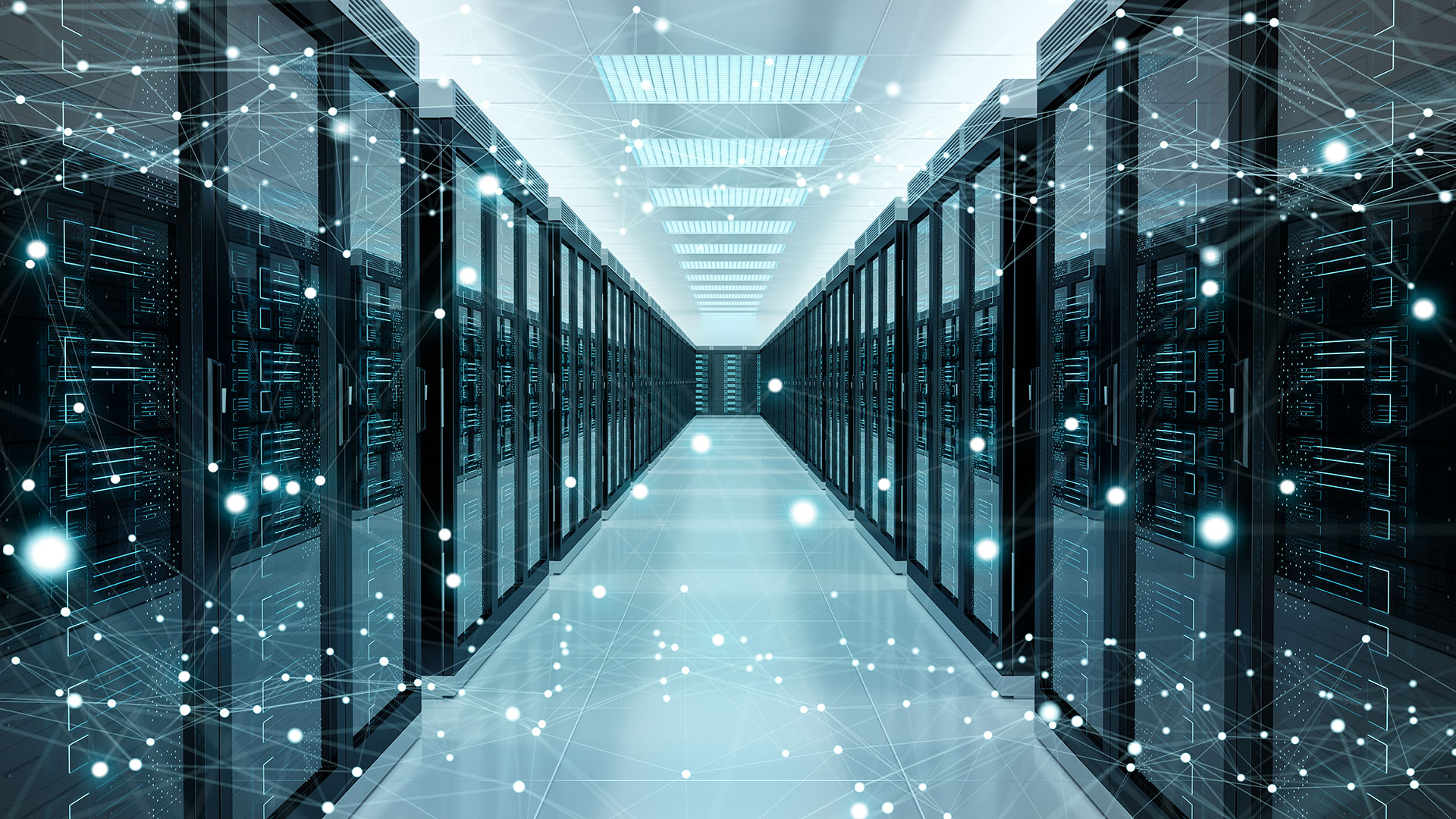Building a better data centre
Data centres are the backbone of our digital infrastructure but they need to evolve to meet the shifting demands of today and beyond


We’re in the midst of a data explosion. As IoT expands and more and more devices become a part of our daily lives, the amount of data we produce is multiplying rapidly. International analyst firm IDC estimates the global datasphere, or the total amount of data stored on computers across the world, will grow to 175 zettabytes by 2025, up from the reported 44 zettabytes we saw in 2020.
Data fuels routine things like the online purchases we make and the simple act of messaging a friend, but it also powers innovation in business and supports digital infrastructure. Data centres are the backbone of this infrastructure, but, as with any technology, they need to evolve and change to meet shifting demands. As organisations across the globe embrace digital transformation, so too must data centres transform to meet the growing demands of businesses and consumers.
Organisations must find the right partner to handle their growing data needs, particularly when data centres should no longer be viewed as passive facilities in the overall IT infrastructure. With energy and space becoming more valued resources, it’s time to review and re-prioritise how data centres operate, from planning them out to building and running them. Huawei’s Smart Data Centre Solution offers an agile, reliable and energy-efficient infrastructure for channel partners and enterprises, with the key guiding tenets outlined below.
Transforming productivity and adding value
First and foremost, the priority should be to create added value for the facility. Upfront, data centres present myriad problems that can rack up costs – think construction, power consumption, operation and maintenance and security. Therefore, enterprises must create more business value – on the already surging bills – by shortening the time to market, cutting the total cost of ownership, and increasing internal rate of return for these new data centre facilities. And it requires a new mindset in planning the data centre construction.
However, making the most of existing resources or finding new locations to build data centres is key. This can be a challenge for many organisations. For example, Huawei has found that electric power companies are the most proficient at integrating data centres into their current locations, seamlessly deploying thanks to existing infrastructures of power supplies and fibre optic connectivity.
Even if the resource isn’t immediately available, Huawei’s ‘make any room a data centre’ ethos can quickly transform any environment into a space that fits the facility. One example is French service provider CRT Informatique, which turned the 17th century Le Château de la Romanerie in Angers into a data centre. With Huawei’s help. CRT moved into two rooms in the east wing of the castle to host generic and medical data. As the castle is listed as a historical monument, Huawei and CRT had to carefully manage the installation of modern technology in a centuries-old building. In fact, the heat from the data centre is now used to warm the castle.
“In any project, CRT must put forward a new concept to differentiate itself from the competition,” said Violaine Petit, sales and marketing VP of CRT Informatique. “We do not want to build something in a concrete cube, something normal. We want to be different. When we are different, we win in the market.
“We also want to invest in a meaningful project for customers, especially our public services customers, which was an important point for us.”
Going greener
The world’s growing appetite for digital services means a greater need for data centres. However, some reports have forecast that data centre energy consumption could potentially triple over the next decade. A 2020 study from the academic journal Science found that data centres are responsible for 1% of all electricity consumed worldwide. But the advancement of data centres should never become a burden for the planet.
Climate change is one of the major reasons that operators are seriously looking into energy efficiency, especially when many countries are introducing laws and regulations covering data centres and environmental protection. Thus the next-generation data centres are becoming more environmentally friendly – the shift from old, inefficient data centres to newer facilities built by providers of cloud computing services is a positive move.
However, this requires more than just improving the individual parts of these facilities. It needs a whole new infrastructure that completely changes how they operate.
BorsodChem, one of the leading plastic raw material and inorganic chemical producers in Europe, is one organisation that wanted to move to a greener data centre. The Hungary-based firm utilised Huawei’s experience in sustainable data centres to implement a solution that supported fast and easy deployment, flexible on-demand expansion, energy-saving and low TCO. Huawei’s FusionModule2000 solution was critical for BorsodChem, with a modular design that makes it easy to scale up the data centre as and when required.
“The modular data centre’s construction period was substantially shortened, ensuring uninterrupted manufacturing at our plants,” said Pinter Erno, deputy IT director at BorsodChem. “By simplifying the data centre’s operation, we will also drive down operational expenses in the future. Huawei FusionModule2000 exceeded our expectations, and we look forward to continuing the close collaboration with Huawei in the future.”
An ecosystem of success
Huawei says its final guiding principle is to “win together” with its partners and customers by establishing a strong ecosystem. Technology and businesses will always be evolving, and organisations need to keep up with these changes through a solid digital transformation strategy.
Each enterprise will be looking to get something different out of digital transformation, but successful companies don’t operate within a vacuum. Huawei believes IT companies need to work together to succeed, and that philosophy has served one of its service providers Intelligent Power Solutions (IPS) well. Hungary-based IPS has been delivering solutions for its customers with Huawei since 2011, sharing a common goal to drive value and solve complex technical and business issues.
“The relationship continues to go from strength to strength,” says IPS CEO Peter Perjesi. “We won lots of projects during the past years, and Huawei delivers exceptional service and strong tech and sale support in our long-term partnership.’’
Building and developing that ecosystem of partners is paramount to Huawei, ensuring that both enterprises and channel partners can benefit from the technological, environmental, and TCO advancements that its Smart Data Centre Solutions provide.
From 24 to 26 March, Huawei will host the Industrial Digital Transformation Conference 2021 online, exploring the power of the resilient and innovative digital world from three perspectives: business, technology and ecosystems. Featuring a series of activities – from keynote speeches to forums and roundtables – the Industrial Digital Transformation Conference 2021 will be an open and inclusive platform that serves as the backdrop for in-depth, ambitious dialogue. For registration, please click here.
Stay up to date with the latest Channel industry news and analysis with our twice-weekly newsletter
Dan is a freelance writer and regular contributor to ChannelPro, covering the latest news stories across the IT, technology, and channel landscapes. Topics regularly cover cloud technologies, cyber security, software and operating system guides, and the latest mergers and acquisitions.
A journalism graduate from Leeds Beckett University, he combines a passion for the written word with a keen interest in the latest technology and its influence in an increasingly connected world.
He started writing for ChannelPro back in 2016, focusing on a mixture of news and technology guides, before becoming a regular contributor to ITPro. Elsewhere, he has previously written news and features across a range of other topics, including sport, music, and general news.
-
 I couldn’t escape the iPhone 17 Pro this year – and it’s about time we redefined business phones
I couldn’t escape the iPhone 17 Pro this year – and it’s about time we redefined business phonesOpinion ITPro is back on smartphone reviews, as they grow more and more intertwined with our work-life balance
-
 When everything connects, everything’s at risk
When everything connects, everything’s at riskIndustry Insights Growing IoT complexity demands dynamic, automated security for visibility, compliance, and resilience
